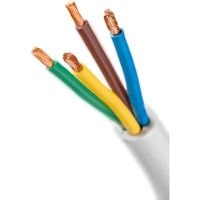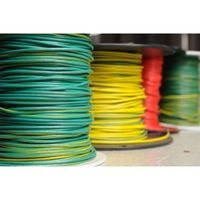What size wire for 60 amp breaker. Wire thickness is important. Resistance will trigger the wire to get too hot when passing the amount of amperage required to trip the breaker if you use a wire that is too small in gauge.
If this happens, an electrical fire can start and that is something we want you to avoid. A heavier-gauge wire is tough to deal with, hard to link/connect, and costs more too – so be sure not to use too much of an oversized wire.
What size wire for 60 amp breaker

Electrical wire manufacturing recommended charts recommend the maximum current that each gauge can handle. 6-gauge wires are able to pull 55 amps, which means you should use 4-gauge wire for a 60-amp circuit.
However, in most cases, it is common among home users and electricians to install a 6-gauge wire on a 60-amp breaker along with extra copper if the appliance only pulls around 30 amps on average.
For example, if you’re using a 60-amp breaker to power your dryer, an appliance that rarely fully draws its rated current.
In this case, it is advised for you to use more than just one conductor cable as well as #4 AWG (American Wire Gauge) wire since most large appliances like clothes dryers and water heaters have high start-up currents before dropping down to normal use levels.
First and foremost, Safety
Before starting any work that involves the panel, it’s critical to remember that the bus bars are electrically active at all times, even if the main breaker has been de-energized.
Make sure to not just touch any metal parts inside the panel you might accidentally brush against on your way to doing work because this could lead to a serious shock or worse.
If you don’t have much experience working with electrical systems, hire an electrician to take care of it while you supervise them and make sure they’re following proper safety protocol.
The last thing you want is to become electrocuted before even taking a step back from your repair project.
How to Install a 60-Amp Breaker
A 240-volt circuit has three conductors, including two hot wires covered with red and black insulation and a neutral wire covered with white insulation. There’s also a ground wire that doesn’t count as a conductor.
After you feed the cable into the panel, separate the wires and strip an inch of insulation off each one then make the following connections: Connect the white wire to the neutral bus, which is the chrome one with White wires attached to it.
Connect the ground wire to the ground bus, which similarly has more ground wires attached to it.
Connect the red wire to one of the lugs on the 60-amp breaker or position it at either of them it doesn’t matter which one and connects its black counterpart on both sides at once.
When everything is tight, position your breaker in front of a vacant slot (you actually need two adjacent slots) and snap it into place.
Can 8 gauge wire handle 60 amps?
An 8 gauge copper wire can handle about 50 amps of current at 167 degrees F, but an 8 gauge aluminum wire at the same ambient temperature rating will only carry 40 amps.
Therefore, a thicker wire with lower resistance is needed to handle a sustained load of up to 60 amps.
What size wire do I need to run 60 amps 100 feet?
Normally, you’ll use 4 AWG copper wires in house wiring, but if you run over 100 feet of wire it may be a good idea to go with 6 AWG wires instead.
A lot of house power is needed to run items like heaters and toasters making the cable under a lot more pressure than just running something like a radio in your living room.
What size wire for 60 amp breaker
Related Guides
